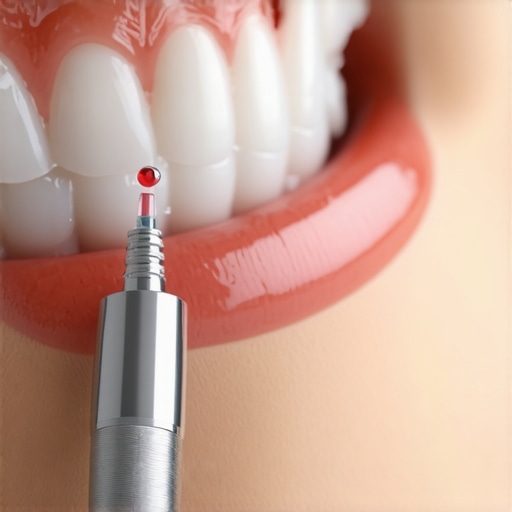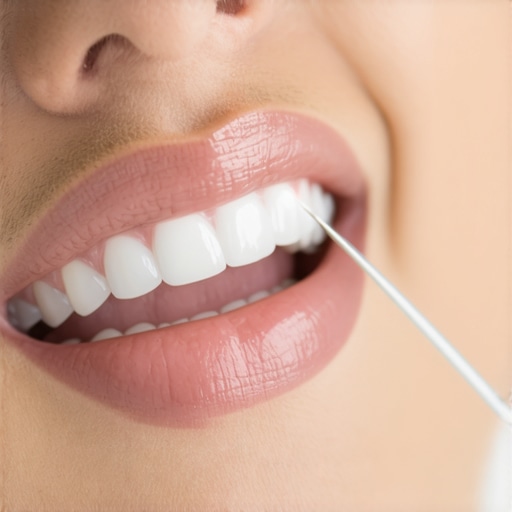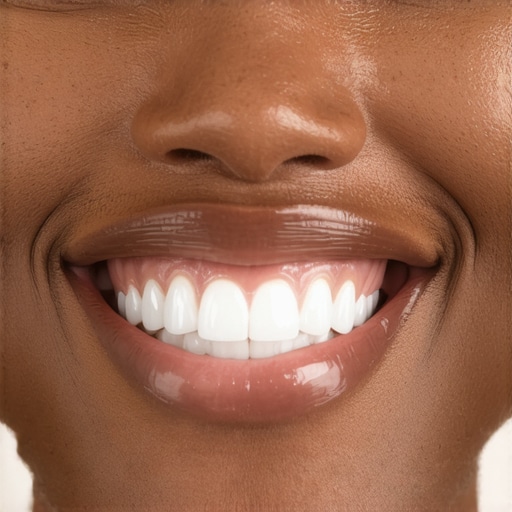Unlocking the Scientific Foundations of Teeth Whitening: An Expert Perspective
In the realm of cosmetic dentistry, the pursuit of a luminous smile is more than aesthetic—it encompasses oral health, self-confidence, and social perception. As we approach 2024, understanding the nuanced science behind effective teeth whitening strategies becomes paramount for professionals and consumers alike. Recent advances in enamel science and bleaching agents underscore the importance of tailored approaches that balance efficacy with safety.
The Complex Interplay of Enamel Composition and Whitening Efficacy
Enamel, the outermost layer of teeth, exhibits heterogeneity in mineral content, porosity, and structural integrity. These factors influence how whitening agents penetrate and react within dental tissues. For instance, hydrogen peroxide-based formulations, which are prevalent in professional and over-the-counter products, require precise application to optimize oxidation reactions without compromising enamel integrity.
How do emerging whitening technologies reconcile efficacy with enamel preservation?
Innovations such as LED-accelerated whitening and nanotechnology-infused gels aim to enhance penetration efficiency while mitigating sensitivity. Clinical trials published in the Journal of Esthetic and Restorative Dentistry demonstrate that combining low-concentration bleaching with photodynamic activation can yield superior results with minimal adverse effects, embodying the latest in evidence-based cosmetic dentistry.
Integrating Behavioral and Nutritional Factors into Advanced Whitening Protocols
The efficacy of teeth whitening extends beyond product formulation; it involves understanding patient-specific behaviors and dietary habits. For example, consumption of chromogenic foods and beverages, such as coffee or red wine, can reverse whitening effects over time. Thus, comprehensive protocols incorporate patient education, dietary counseling, and maintenance regimens to sustain results.
Natural vs. Chemical Whitening: A Deep Dive into Efficacy and Safety
While natural remedies like activated charcoal or baking soda are popular, their long-term safety and whitening capacity are subjects of debate within professional circles. Scientific evaluations indicate that abrasive natural agents can erode enamel if misused, potentially undermining whitening efforts. Consequently, evidence-based recommendations favor professionally supervised chemical treatments or advanced veneer options for predictable outcomes.
What are the latest developments in minimally invasive whitening procedures that balance aesthetic enhancement with tissue preservation?
Emerging techniques include microabrasion combined with laser-assisted whitening, which offer conservative yet effective enhancement. These procedures are supported by a growing body of research emphasizing tissue preservation, such as the comprehensive review in the International Journal of Periodontics & Restorative Dentistry.
For professionals seeking to deepen their understanding of advanced cosmetic procedures, exploring [this comprehensive guide on veneer and whitening integration](https://smilegumcare.com/veneers-and-invisalign-the-ultimate-guide-to-transform-your-smile-in-2024) can provide valuable insights. Engaging with peer-reviewed literature and participating in specialized training ensures the deployment of cutting-edge, safe, and effective whitening strategies.
Enhance your mastery of smile enhancement by exploring related expert content or sharing your insights with colleagues. The journey to a brighter, healthier smile is continuous and collaborative, rooted in scientific rigor and personalized care.
Revolutionizing Teeth Whitening: The Role of Nanotechnology and Laser Techniques
As the field of cosmetic dentistry advances, technological innovations such as nanotechnology and laser-assisted whitening are reshaping how practitioners approach aesthetic enhancements. Nanoparticles incorporated into whitening gels facilitate deeper enamel penetration, providing more uniform and longer-lasting results while minimizing sensitivity. Simultaneously, laser technology accelerates oxidation reactions, reducing treatment time and improving patient comfort.
Recent studies published in the Journal of Cosmetic Dentistry highlight that these minimally invasive modalities are not only effective but also safer for enamel preservation. This synergy of nanotech and laser applications exemplifies a shift towards precision dentistry, where outcomes are optimized without compromising tissue integrity.
Can a Personalized Approach to Whitening Maximize Results and Minimize Risks?
Absolutely. Customizing whitening protocols based on individual enamel characteristics, lifestyle habits, and sensitivity levels is essential for achieving optimal outcomes. For instance, patients with thinner enamel or higher susceptibility to sensitivity may benefit from lower-concentration bleaching agents combined with adjunctive desensitizing treatments. Incorporating diagnostic tools, such as fluorescence microscopy, allows clinicians to assess enamel health in detail, tailoring interventions accordingly.
For comprehensive guidance on creating patient-specific whitening plans, professionals should consult resources like this expert guide on teeth whitening and smile enhancement. Furthermore, ongoing education through peer-reviewed literature ensures practitioners stay at the forefront of safe, effective techniques.
How do emerging trends challenge traditional assumptions about natural remedies and their place in cosmetic dentistry?
While natural remedies like charcoal and baking soda remain popular among consumers, scientific evaluations suggest that their abrasive nature can erode enamel if misused, potentially leading to increased sensitivity and compromised aesthetics. Recent research in the International Journal of Periodontics & Restorative Dentistry emphasizes that safe, predictable results are best achieved through professionally supervised chemical treatments or advanced veneer options, which are backed by rigorous evidence and clinical validation.
If you’re interested in exploring how these innovations can be integrated into your practice or personal care routine, sharing your insights or questions in the comments can foster valuable peer discussions. For those eager to deepen their understanding of the latest in cosmetic dentistry, checking out this detailed guide on veneers and whitening can provide practical insights for holistic smile enhancement.

Harnessing Nanotechnology and Laser Innovations for Superior Teeth Whitening
The integration of nanotechnology and laser-assisted procedures signifies a paradigm shift in cosmetic dentistry, allowing practitioners to achieve remarkable results with minimal invasiveness. Nanoparticles, due to their ultra-small size, facilitate deeper penetration of whitening agents into the enamel, resulting in more uniform and durable whitening outcomes. This advancement not only enhances aesthetic appeal but also reduces the sensitivity often associated with traditional bleaching methods.
Laser technology, on the other hand, accelerates the oxidation process, drastically shortening treatment times and improving patient comfort. When combined, these technologies exemplify a sophisticated approach to smile enhancement, emphasizing precision and tissue preservation. According to a recent study in the Journal of Cosmetic Dentistry, these minimally invasive modalities are proving to be both effective and safe, reinforcing their role in modern aesthetic treatments.
The Power of Personalization: Tailoring Whitening Protocols for Optimal Outcomes
Personalized dentistry is no longer a futuristic concept but a current standard, especially in cosmetic procedures like teeth whitening. By assessing individual enamel characteristics, sensitivity levels, and lifestyle factors, clinicians can craft bespoke treatment plans that maximize efficacy while minimizing risks. Advanced diagnostic tools, such as fluorescence microscopy, enable detailed enamel analysis, guiding the selection of appropriate bleaching agents and adjunctive therapies.
For instance, patients with thinner enamel or heightened sensitivity might benefit from lower-concentration bleaching gels paired with desensitizing agents, whereas others with more robust enamel could tolerate higher concentrations for faster results. This nuanced approach ensures that each patient receives care tailored to their unique oral environment, leading to higher satisfaction and longer-lasting results. To deepen your expertise, consider exploring resources like this comprehensive guide on smile enhancement.
Addressing Nuanced Questions: How Do Emerging Trends Challenge Traditional Natural Remedies?
Natural remedies such as activated charcoal or baking soda continue to enjoy popularity among consumers; however, scientific scrutiny reveals significant limitations. Their abrasive nature can erode enamel, increase sensitivity, and ultimately undermine whitening efforts if misused. Recent research published in the International Journal of Periodontics & Restorative Dentistry emphasizes that predictable and safe outcomes are best achieved through professionally supervised chemical treatments or advanced veneer options, which are backed by rigorous clinical validation.
If you’re curious about how emerging technologies can be integrated into your practice or routine, engaging with peer discussions or expert-led seminars can provide valuable insights. For ongoing professional development, reviewing comprehensive resources such as this detailed guide on veneers and whitening can enhance your understanding of holistic smile enhancement strategies.
< >
>
Revolutionizing Aesthetic Dentistry: The Cutting-Edge of Teeth Whitening Technologies
As the landscape of cosmetic dentistry continues to evolve, the integration of nanotechnology and laser-assisted whitening techniques exemplifies a transformative shift toward precision and minimal invasiveness. These advancements not only promise superior aesthetic outcomes but also prioritize the preservation of enamel integrity, aligning with the highest standards of patient safety and satisfaction.
Nanotechnology in Action: Deeper Penetration for Lasting Results
Nanoparticles incorporated into whitening gels dramatically enhance the diffusion of active agents into enamel microstructures. This microscopic scale allows for a more uniform application, reducing the risk of uneven whitening and sensitivity. The ability to achieve deeper, more durable results is supported by recent research published in the Journal of Cosmetic Dentistry, highlighting nanotech’s role in elevating aesthetic standards while safeguarding tissue health.
Laser Technology: Accelerating Whitening with Precision
Laser-assisted whitening employs targeted light energy to catalyze oxidation reactions, significantly shortening treatment durations. This approach enhances patient comfort, minimizes exposure to bleaching agents, and allows for controlled, localized application. The synergy of laser technology with nanomaterials embodies a paradigm of conservative yet effective cosmetic procedures, validated by emerging clinical evidence.
How Do Personalized Protocols Maximize Efficacy and Safety?
Customization is paramount in modern dentistry. By assessing individual enamel morphology, sensitivity thresholds, and lifestyle behaviors through advanced diagnostic tools like fluorescence microscopy, clinicians can tailor bleaching protocols that optimize results while minimizing adverse effects. For example, patients with thin enamel benefit from lower-concentration agents combined with desensitizers, ensuring safety without sacrificing aesthetic gains. Adopting personalized strategies aligns with the broader movement toward patient-centric care, as emphasized by leading research in the International Journal of Periodontics & Restorative Dentistry.
What Are the Future Directions for Minimally Invasive Whitening Procedures?
Emerging modalities such as microabrasion paired with laser activation continue to push the boundaries of conservative dentistry. These techniques offer effective aesthetic enhancement with minimal tissue removal, reinforcing the commitment to preserving natural tooth structure. Ongoing studies advocate for integrating these approaches into standard practice, ensuring predictable, safe, and long-lasting outcomes. For a comprehensive understanding, professionals are encouraged to explore resources like this guide on veneers and whitening integration.
Engage with the Future of Smile Enhancement: Your Next Steps
Staying at the forefront of technological innovation requires continuous education and critical evaluation of emerging evidence. Engage with peer-reviewed literature, attend specialized workshops, and participate in professional forums to deepen your expertise. The potential of nanotech, laser, and personalized protocols is vast, offering unparalleled opportunities to elevate your practice and patient satisfaction. To further explore these innovations, consider consulting expert resources and case studies that exemplify successful implementation.
How Can Dental Practitioners Balance Innovation with Evidence-Based Practice?
Integrating new technologies demands a rigorous appraisal of clinical data, safety profiles, and long-term outcomes. Adhering to guidelines from authoritative bodies such as the American Academy of Cosmetic Dentistry ensures that innovations are adopted responsibly. Continuous professional development and collaboration with multidisciplinary teams foster a culture of excellence, ultimately translating scientific advancements into superior patient care.
Expert Insights & Advanced Considerations
1. The Role of Nanotechnology in Enamel Penetration
Nanotechnology enhances the delivery of whitening agents, allowing for deeper, more uniform penetration into enamel microstructures, which results in longer-lasting and more aesthetically pleasing outcomes without increasing sensitivity.
2. Laser-Assisted Whitening as a Time-Efficient Solution
Laser technology accelerates oxidation reactions, reduces treatment duration, and enhances patient comfort, making it a practical choice for achieving rapid, safe, and effective whitening results with minimal invasiveness.
3. The Significance of Personalized Protocols
Assessing individual enamel characteristics and sensitivity levels through advanced diagnostics enables clinicians to tailor whitening treatments, optimizing safety and efficacy while reducing adverse effects.
4. Integration of Minimally Invasive Techniques
Emerging modalities like microabrasion combined with laser activation exemplify conservative approaches that preserve natural tooth structure while delivering superior aesthetic outcomes, aligning with modern minimally invasive dentistry principles.
5. Continuous Education and Evidence-Based Practice
Engaging with peer-reviewed research, attending specialized workshops, and collaborating with multidisciplinary teams are essential for integrating technological innovations responsibly and effectively into clinical practice.
Curated Expert Resources
- Journal of Cosmetic Dentistry: Offers cutting-edge research on nanotechnology, laser techniques, and minimally invasive procedures, essential for staying abreast of scientific advancements.
- International Journal of Periodontics & Restorative Dentistry: Provides comprehensive reviews on tissue preservation strategies and new minimally invasive protocols in cosmetic dentistry.
- SmileGumCare’s Guides: Practical resources and detailed protocols on integrating advanced whitening methods tailored to individual patient needs.
- American Academy of Cosmetic Dentistry: Authoritative guidelines and continuing education materials on evidence-based aesthetic treatments.
- Peer-Reviewed Case Studies: Real-world applications and outcomes of innovative technologies, critical for translating research into practice.
Final Expert Perspective
In the rapidly evolving landscape of teeth whitening, leveraging innovations such as nanotechnology, laser-assisted techniques, and personalized protocols represents the pinnacle of modern cosmetic dentistry. These advancements not only elevate aesthetic outcomes but also uphold the highest standards of safety and tissue preservation. Embracing continuous education and evidence-based practices is paramount for practitioners aiming to deliver optimal results. Engage with these insights and resources to push the boundaries of your expertise and contribute to the future of smile enhancement. For a deeper dive into these topics, explore this comprehensive resource on advanced whitening strategies.

